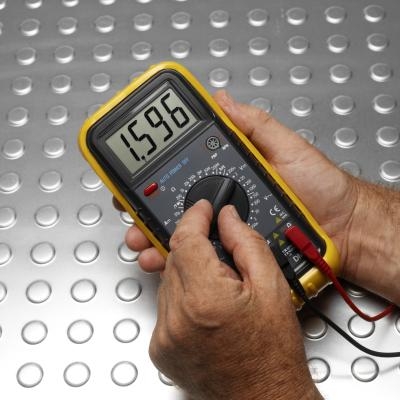
Both General Motors Company and Ford Motor Company produce 4.3-liter engines. The Ford 4.3-liter engine is a V-8. Two of the three 4.3-liter engines produced by GM are V-8s and the third is a V-6. Regardless of the company or engine configuration, the fuel injector basic design is the same. Fuel injectors are connected to a pressurized fuel line and operate when an electrical current charges a solenoid pulling open a valve. For the brief period the valve is open, the pressurized fuel passes through the injector and is sprayed into the combustion chamber.
Connect the scan tool to the OBD-II reader. The OBD-II reader is located under the dash on the driver's side. The exact location varies in both Ford and GM model, though in both vehicles they are generally under the left hand side of the dash.
Turn on the scan tool and read the codes provided to the tool by the engine's on-board computer. Specific instructions vary by scan tool type. Consult the owner's manual for exact steps.
Reference the codes in the scan tool's code manual. Failing injectors may produce "lean" or "rich" combustion readings or may trigger a "mis-fire" in the associated cylinder.
Note the fuel injector as suspect on cylinders triggering engine codes. Further testing is required.
Start the engine.
Place the end of a screwdriver against top of the fuel injector.
Push your ear against the handle of the screwdriver. An operational fuel injector will transfer a clicking sound through the screwdriver. The clicking sound is from the engagement of the solenoid and valve. If no clicking sound is present, the injector is not pulsing.
Test the electrical plug according to the instructions in the next section to ensure it is providing 12 volts. If the plug is providing an electrical current, but the fuel injector is failing the solenoid and valve test, replace the fuel injector.
Turn the ignition key to the start position, but do not start the engine.
Remove the fuel injector electrical plug.
Adjust the multimeter to check "Voltage." Touch the red and black multimeter leads to the inside metal portion of the electrical plug. One lead should connect to each side of the plug. Either lead can be connected to either side of the plug.
Check the voltage at the plug. The measurement should be approximately 12 volts.
Replace any fuel injector which is failing, but receiving 12 volts of current through the electrical plug.
Disconnect all of the electrical plugs from the fuel injectors on the 4.3-liter engine.
Adjust the multimeter to "Ohms" to check resistance. Connect both multimeter leads to the fuel injector plug terminal. Either lead can touch either side of the terminal, but both sides of the terminal must be connected to the multimeter.
Measure the resistance. Write down the Ohms measurement along with the cylinder number or position on the engine.
Repeat Steps Two and Three on all remaining fuel injector plugs.
Compare all of the Ohms measurements. The measurement for any individual fuel injector should approximate the resistance measurements of the other fuel injectors. If you find one fuel injector is significantly higher or lower than the others, the injector is failing or has failed. Replace fuel injectors that fail the resistance test.